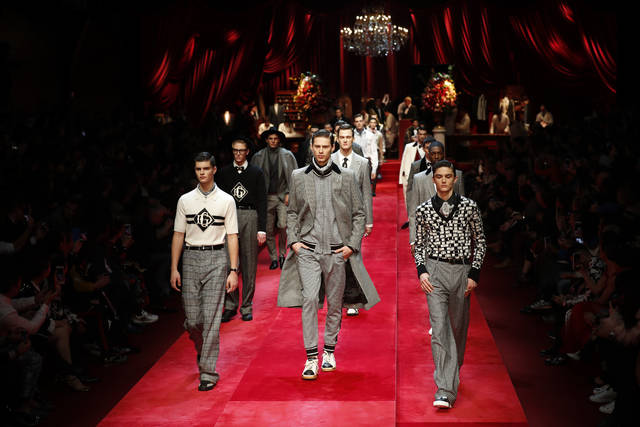MILAN — The return of Gucci to the menswear catwalk calendar, robust sales of Italian fashion and a farewell to the pandemic-imposed trend of virtual shows — it’s all systems go for men’s fashion week in Milan opening yesterday.
Promising spectacle and optimism after a year in which sales of Italian fashion showed the strongest growth of the last 20 years, presentations for Fall-Winter 2023/2024 men’s collections run until Tuesday.
Of the 79 shows, only four are digital, a holdover from the debilitating pandemic period that sent sales plunging and brought a halt to live runway shows.
Nothing replaces “the live experience, the frenzy, the expectation, the applause, the top models parading on the catwalk and the powerful music,” fashion consultant Elisabetta Cavatorta told AFP.
Most anticipated is fashion powerhouse Gucci which is putting on a menswear only show for the first time in three years.
It will also be the first since artistic director Alessandro Michele’s surprise departure in November.
With bold, colourful collections seeped in the 1970s, Michele provided a new lease on life after being tapped in 2015 to revive sales at the storied brand with the world-famous stripe logo in green and red.
While sales exploded by 44 per cent in 2018 for Kering’s flagship brand, growth has lagged competitors in the last two years.
“It remains to be seen whether Alessandro Michele’s departure initiates a change of direction for the fashion house,” Cavatorta said.
As to who will take over the reins at Gucci, the fashion world awaits news of Michele’s successor with bated breath.
Soaring revenues
Armani, Prada, Fendi, Dolce & Gabbana and Zegna are among the big labels set to unveil men’s collections in the Italian fashion capital.
But there have been defections including Versace, which plans to show its men’s and women’s collections together in Los Angeles on March 10.
Despite the war in Ukraine and the impact of the energy crisis on an energy-intensive fashion supply chain, sales of Italian fashion last year rose 16 per cent to €96.6 billion ($104.4 billion).
“This is the highest revenue in the last 20 years,” said Carlo Capasa, president of the Italian Fashion Chamber, at a presentation ahead of the shows last month.
Inflation has had an impact, as Italian fashion prices rose by about nine per cent in 2022, but their increase is “a positive sign that closes a year marked by dramatic events and difficult times,” Capasa added.
Exports of “Made in Italy” fashion climbed 18.7 per cent in the first nine months of last year, driven by demand in the United States and the Gulf countries where exports both soared by more than 50 per cent.
Sales to China grew more moderately, at 18.8 per cent, while exports to Russia fell by 26 per cent, in the wake of the invasion of Ukraine.
But one area in which the impact of the Covid-19 crisis will still be felt in Milan is the absence of Chinese buyers.
Despite the lifting of coronavirus-related health restrictions by authorities in Beijing, the number of buyers who will travel to the city for the shows will be “limited”, Capasa said.






Discussion about this post